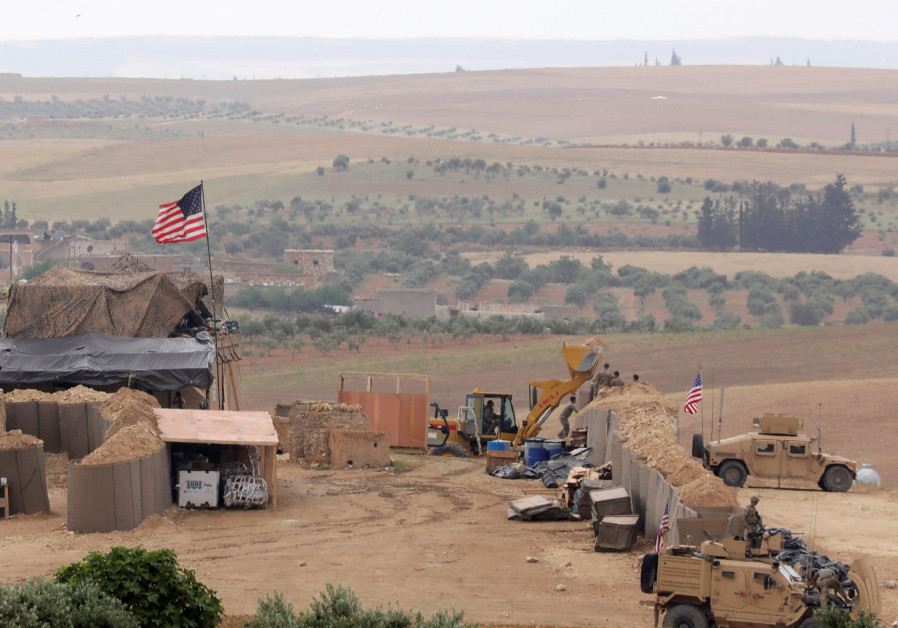US report: Iran provoking and threatening the US in Syria and Iraq

By Seth J. Frantzman
Iranian forces in Syria may present a threat to the US and in Iraq the Iranian threat is increasing, according to a new report from the US Department of Defense. The Lead Inspector General report on Operation Inherent Resolve was released on Tuesday and reviews the US role fighting Islamic State in Syria and Iraq.
However the quarterly report, which covers operations from July to September of this year, notes that Iran is increasingly a threat to the US and examines how Washington is now changing its posture in Syria as the mission changes.
Be the first to know – Join our Facebook page.
In the last several months US officials have said that American troops would remain in Syria as long as Iranian troops were also present in the country. The US is now seeking to “leverage” its influence in Syria to remove Iran.
This is a major mission change from a conflict that began in 2014 to confront ISIS. The US base at Tanf, located in southern Syria near where the Jordanian and Iraqi borders meet, is also the subject of the report’s review. It notes that “while Iranian-backed miliitas may present a threat to the US and Coalition forces in Syria, neither Iran norIranian-backed militias had hindered counter-ISIS operations.” The garrison at Tanf restricts the movement of the Iranians.
Rouhani says Iran will break US sanctions, November 5, 2018 (Reuters)
The Defense Department appears concerned that the mission in Syria is now becoming open-ended. “These policy goals include removing Iran and Iranian proxies from the country, influencing the outcome of the Syrian civil war now in its 8th year and stabilizing areas of northeast Syria liberated from ISIS.”
How to manage all these policies, some of which may be contradictory? Robert Karem, then the Assistant Secretary of Defense for International Security Affairs said the US will “desegregate” these objectives. Confronting Iran is now called an “ancillary” and “residual” benefit of the anti-ISIS war. “These officials raise questions about when the US troop presence will end,” the report notes.
In Iraq the US is also facing an increasing Iranian threat. US forces returned to Iraq in 2014 to confront ISIS and now run an extensive training program with the Coalition of 70 countries that are fighting ISIS. ISIS has “lost all territory in Iraq,” according to the Defense Department. But with US forces still in Iraq, the presence of Iranian-backed forces is a concern.
The report argues that he Popular Mobilization Forces of Shi’ite militias backed by Iran are continuing to act independently of the Iraqi army and this “increases Iran’s influence in Iraq.” The Iranian “proxies” also are increasing their “threatening posture toward US personnel.”
This includes 100-150 Iranian Revolutionary Guard Corps – Quds Force members. The Report blames them for two attacks that targeted US facilities in the last months. “Mortar attacks that targeted the Green Zone and landed near the US Embassy in Baghdad and rocket attacks that targeted the Basra airport, near the US Consulate General.” The US closed its Basra consulate in response.
Iran appears to be running a state within a state in Iraq. The US says that not only is Iran providing significant direct support to armed groups, but they are sending “missiles and rockets that are transported through border crossing points.” In addition Iran gathers combat intelligence, provides training, munitions and “Iranian military hardware such as drone surveillance operations.”
The Iranian-backed militias engage in “running illegal checkpoints, smuggling, drug and oil trafficking, bribery, and extortion.” Iranian-backed groups were accused of preventing Christians who had fled ISIS from returning to homes in Nineveh. “If left unchecked, Iranian-sponsored harassment of US forces could increase and Iranian influence operations could increase as they vie for influence in the new Iraqi government.”
How will the US confront this Iranian threat? Washington is committed to helping the Iraqi government defend itself, but with Iran’s role growing and political parties in Iraq, as well as militias, aligned with Iran, how does the US make sure that support for the government does not end up in Iran’s hands.
The report says the US is committed to countering “malign Iranian influence” but without a policy from Washington directing it how to do this, the report seems to leave a large question mark over what comes next.
